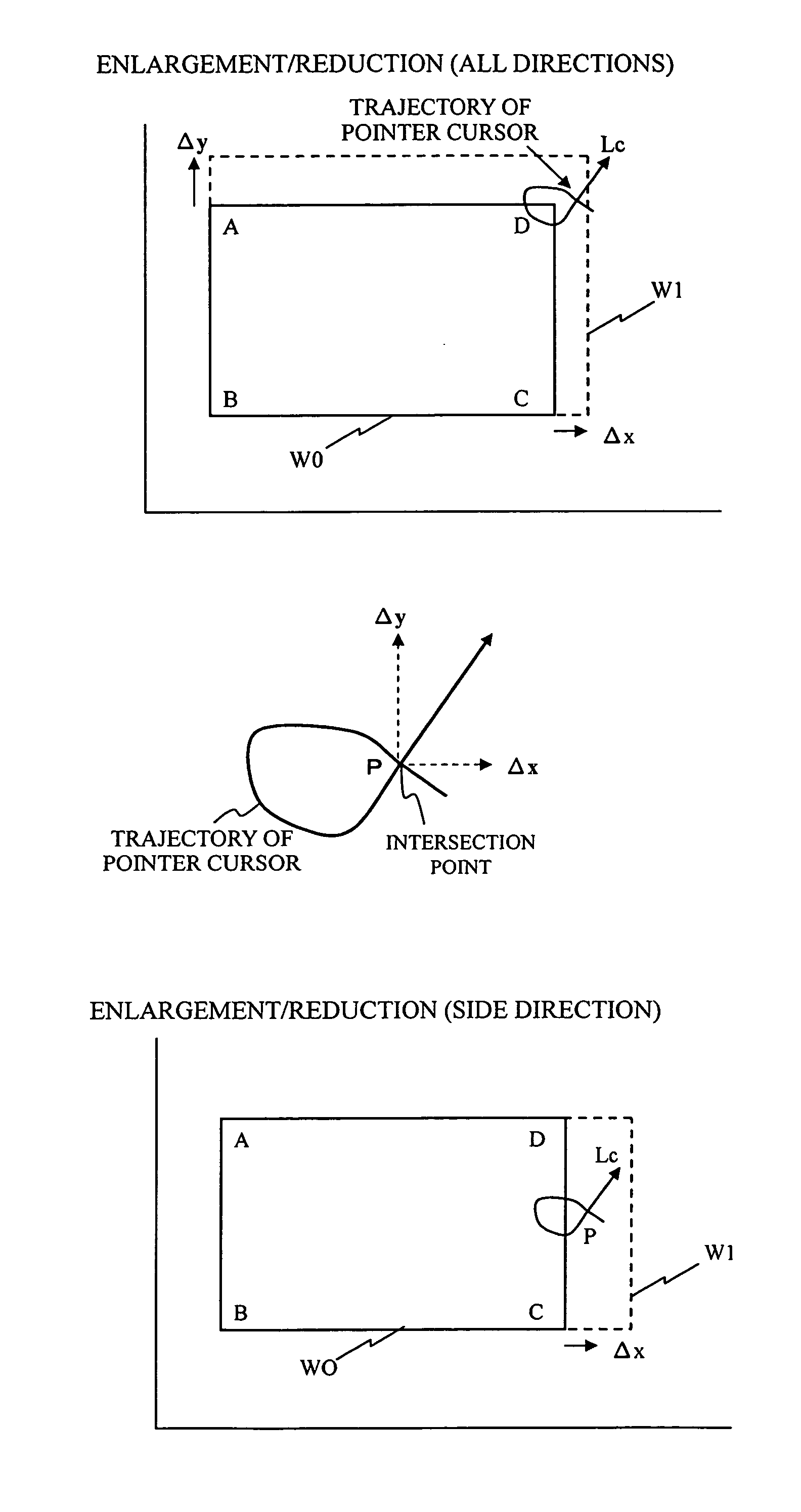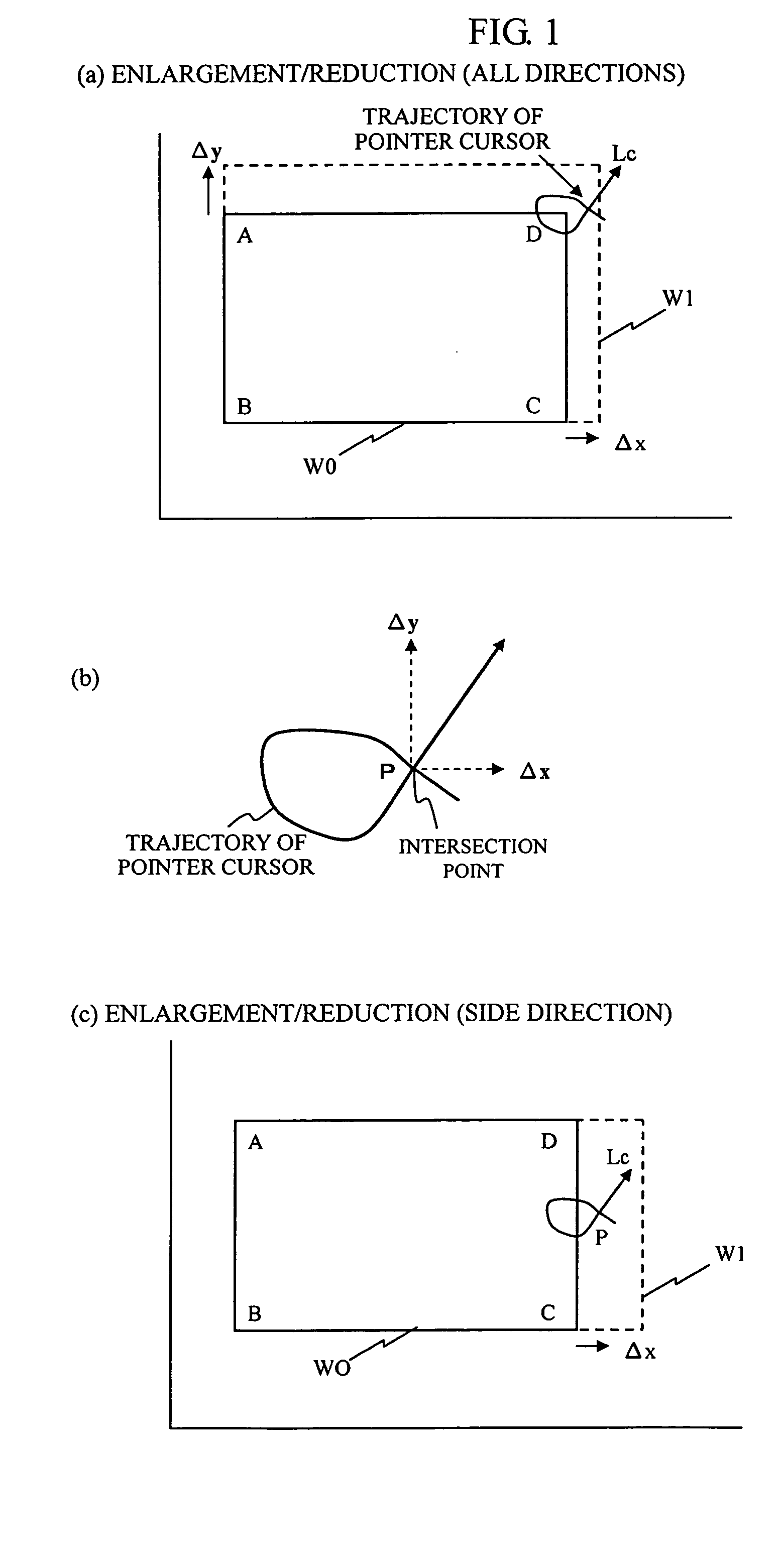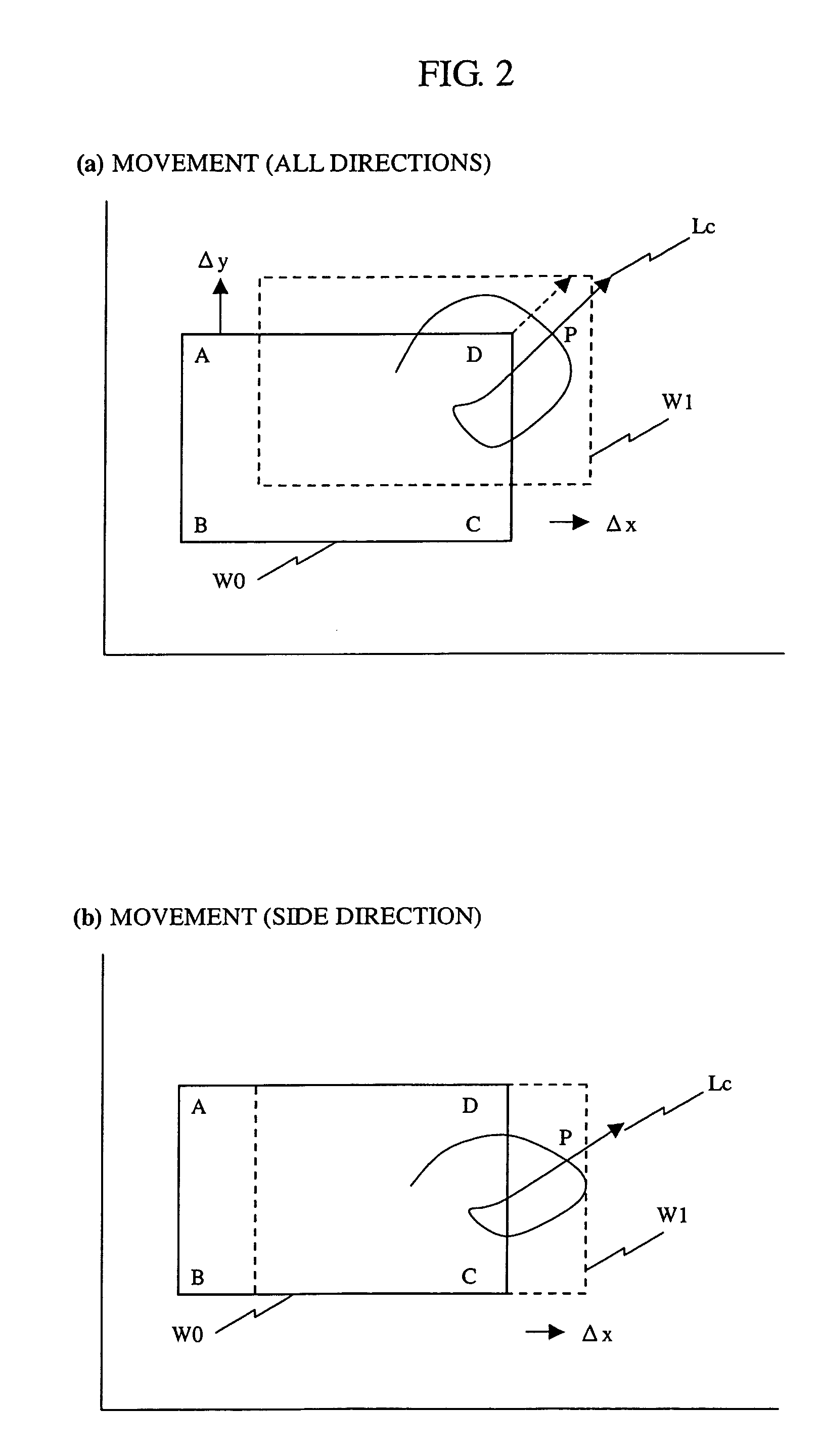Window control method
a control method and window technology, applied in the field of windows, can solve the problems of unintended operation, inability to increase or decrease the size of the window frame, and inability to move the window frame, so as to improve the operability of the window during enlargement/reduction or movement, and eliminate the accuracy of positioning the pointer cursor at the vertex of the window.
- Summary
- Abstract
- Description
- Claims
- Application Information
AI Technical Summary
Benefits of technology
Problems solved by technology
Method used
Image
Examples
Embodiment Construction
[0054] The invention will be described by way of embodiments with reference made to the drawings.
[0055] In accordance with the invention, a pointer cursor of a pointer device capable of designating an arbitrary point on a screen is moved. For example, the cursor is moved to execute a gesturing operation such that one of the four vertexes at the four corners of a window frame is enclosed, thereby designating an operated object based on the trajectory of the movement of the cursor. The operated object can then be moved such that the window frame can be increased or decreased in size in the direction of movement of the operated object by an amount corresponding to the amount of that movement.
[0056] Specifically, a vertex or frame of a window is designated as an operated object when increasing or decreasing the size of a window frame or when moving it on the screen. The vertex or a part of the window frame as the operated object is then encircled by the trajectory of the pointer in a ...
PUM
 Login to View More
Login to View More Abstract
Description
Claims
Application Information
 Login to View More
Login to View More - R&D
- Intellectual Property
- Life Sciences
- Materials
- Tech Scout
- Unparalleled Data Quality
- Higher Quality Content
- 60% Fewer Hallucinations
Browse by: Latest US Patents, China's latest patents, Technical Efficacy Thesaurus, Application Domain, Technology Topic, Popular Technical Reports.
© 2025 PatSnap. All rights reserved.Legal|Privacy policy|Modern Slavery Act Transparency Statement|Sitemap|About US| Contact US: help@patsnap.com



